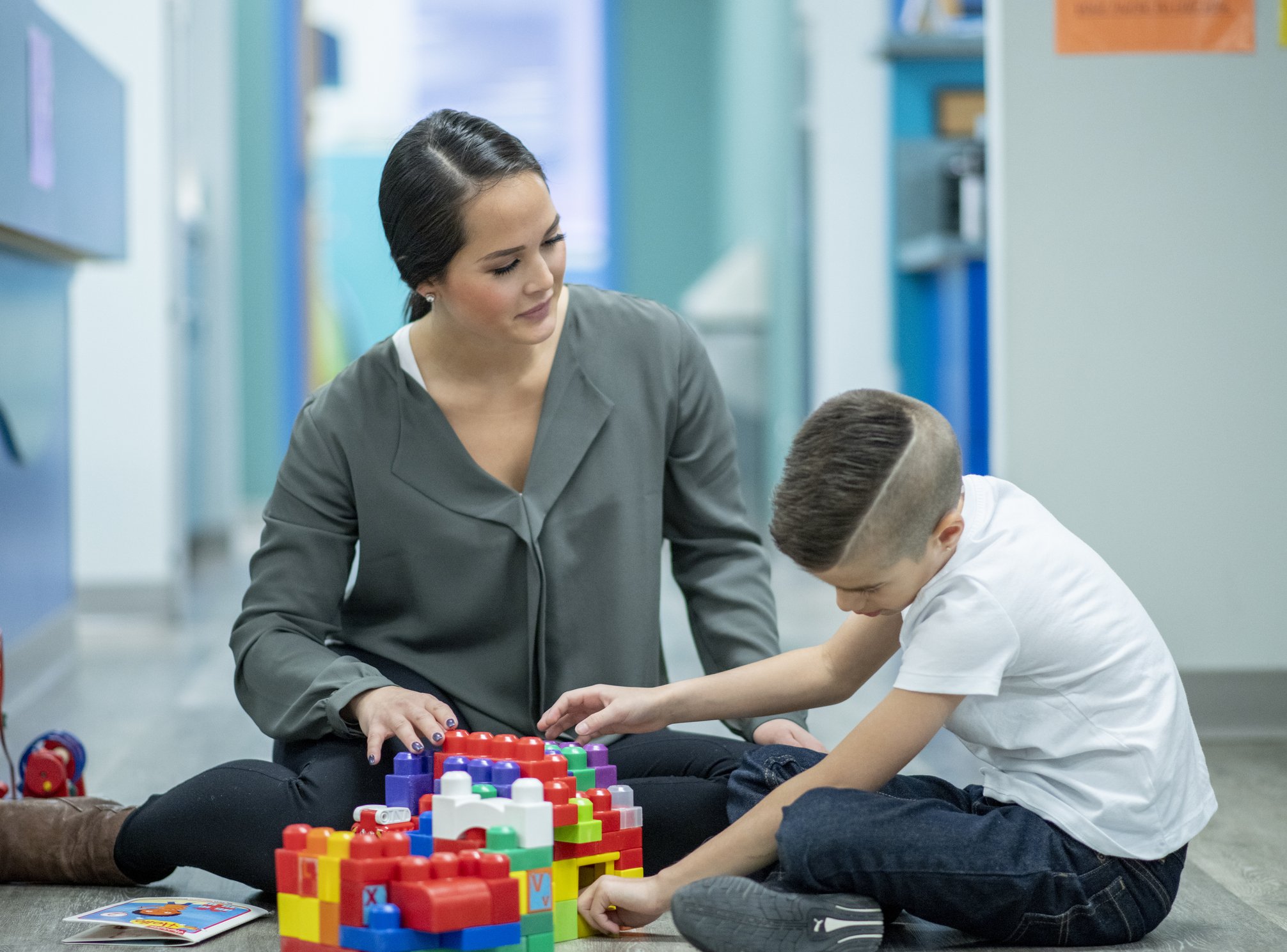
—Our Services—
Your child’s needs are unique. We will create a specialized Therapy plan specifically for your child.
In therapy, your child will be guided through activities that challenge his or her ability to respond appropriately to his/her environment by making a successful, organized response in there school, home and social environment.
When using a sensory integration therapeutic approach, activities will provide vestibular, proprioceptive and tactile stimulation and are designed to meet your child’s developmental needs. Emphasis is placed on autonomic sensory responses in the course of a goal-directed activity. When this approach is successful your child will automatically process complex sensory information in a more effective manner. Very often, parents report that their child seems to be better put together, more self-assured and better organized.
Please review this list of therapy and learn how we can help your child.

-

Occupational Therapy
Can improve a variety of functional daily tasks, such as getting dressed, playground/social skills, performing homework and other activities. Occupational therapists work with your child to develop, improve, or restore your child’s abilities and functions. We can focus on Autism, ADHD, global delay, handwriting, eye-hand coordination, fine & gross motor skills, balance & coordination, social skills/engagement & relatedness, emotional dysregulation, anxiety, eye contact, body awareness, sensory processing & integration, motor planning, attention, bilateral integration, developmental delays, feeding difficulties, oral motor skills, muscle strength, neurological impairments, and Interpersonal skill development. We accept health insurance for Occupational therapy programs.
-

Physical Therapy
Pediatric physical therapists work with children to improve strength, balance, and endurance. Working on functional activities such as standing, rolling, walking, balance and stair climbing. PT’s help to strengthen the muscles and the body as a whole, improving range of motion and improving gait. They help to maximize functional ability in developmental delay.
Physical therapists bring together the understanding of normal child development with an ongoing evaluation of where an individual child stands in comparison, and then facilitate maximizing their functional and developmental delay. We accept health insurance for our Physical therapy programs.
-

Sensory Integration
The term sensory integration stands for a theory, a neurological process, and an intervention approach. “Sensory integration” is defined as the organization of sensations for use by Dr. Jean Arye’s (founder of SI). Our senses give us information about the physical conditions of our body and the environment around us. The brain must organize all of our sensations if a person is to move and learn and behave in a productive manner.
Sensory integration therapy is used to help children learn to use all their senses together-that is, touch, smell, taste, sight and hearing. This therapy can help with behaviors that are due to sensory processing disorder. The therapists then plans and conducts a program that includes activities to stimulate sensory responses from the child-in particular, responses to do with balance, behaviors and physical movement. This might include things like swinging, bouncing, climbing or deep pressure. The goal is to help children improve function in school, home and community. The senses lay critical foundations for normal development impacting on gross and fine motor development, speech language development social and emotional maturity, behavior and learning.
-

Wilbarger Therapeutic “Brushing” Protocol
The Wilbarger deep pressure and proprioceptive technique refers to specific sensory modulation technique developed by renowned occupational therapist Patricia Wilbarger. The protocol is based on sensory integration theory and provides a particular type of sensory input that can have a calming and organizing effect on a child’s central nervous system. It is most often used for individuals who have identified with sensory defensiveness, especially tactile defensiveness. Sensory defensiveness means simply that the child’s nervous system is overly defensive; it will respond to a non-threatening stimulus as if it were threatening. Some commonly reported traits include extreme “pickiness” in food and clothing and shoes. In addition they often withdraw from “messy” art/play materials and need to be in control of when they touch or hug.
-

Handwriting Without Tears®
Handwriting fluency is fundamental to learning because children think and write at the same time. When we teach children to write, we also teach them how to express themselves. If they struggle to form their letters, their ability to express themselves will suffer. Children who do not master handwriting may be slow, sloppy or illegible writers. We focus on fun and achievement to optimize children’s curiosity and joy of learning throughout school. Our goal is to help students learn proper handwriting habits and then apply those habits naturally and automatically to all writing experiences that they’ll take throughout elementary school, high school and beyond. The HWT curriculum starts when children enter Kindergarten. By playing, singing and building letters, they develop important skills they need to print words, sentences, paragraphs and eventually transition to cursive.
-

ABA / Applied Behavioral Analysis
We specialize in Applied Behavioral Analysis programs for learners aged 18 months through 16 years diagnosed with Autism and related disorder. We offer clinical and community based programs created and supervised by a certified teacher and Board Certified Behavior Analyst. We offer a team of Behavioral therapists and technicians in our Behavioral Therapy wing which contains a toddler therapy room, gym areas and private class rooms. We accept health insurance for our behavioral therapy programs.

